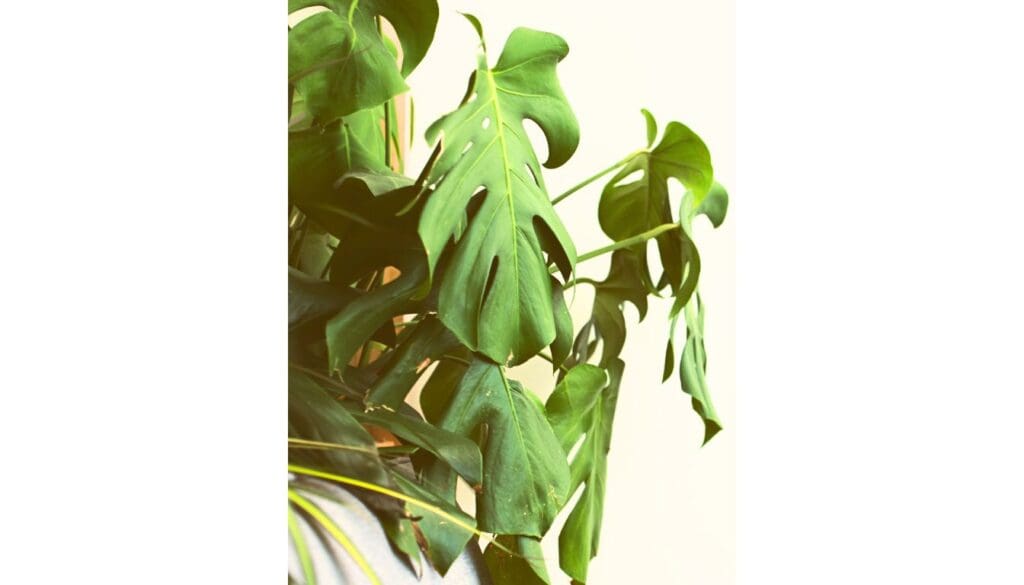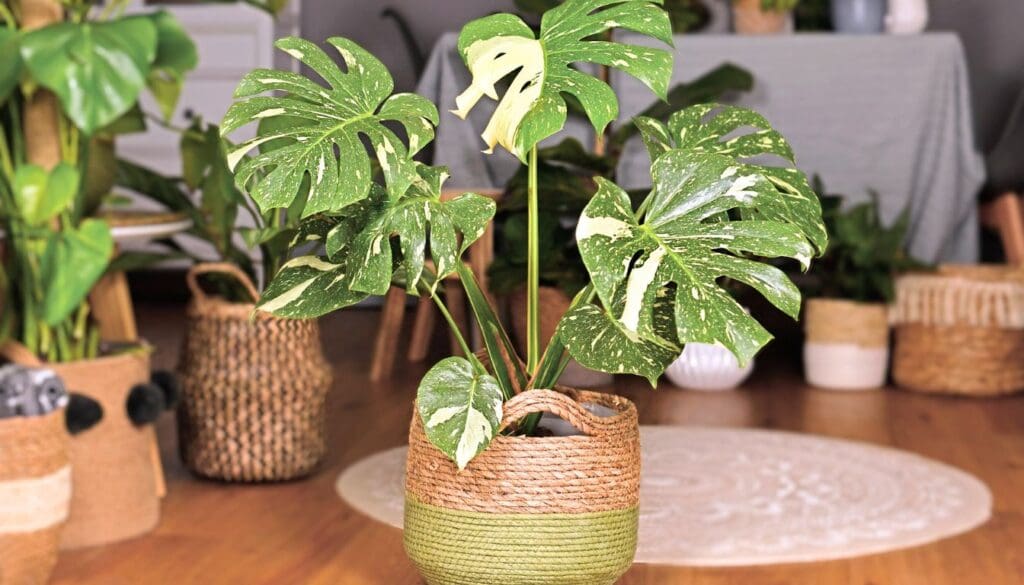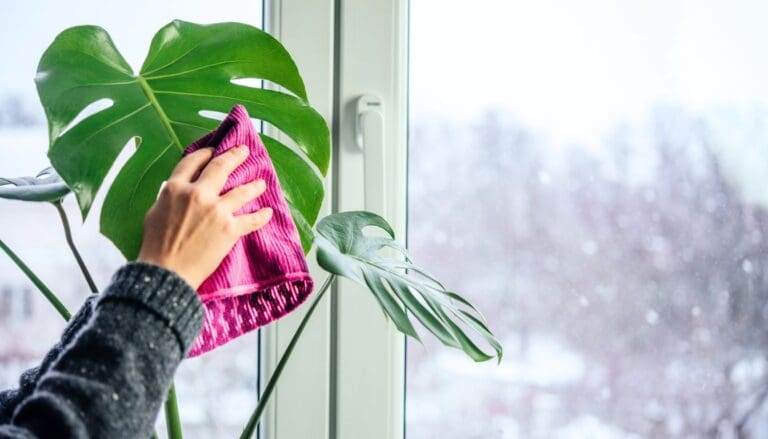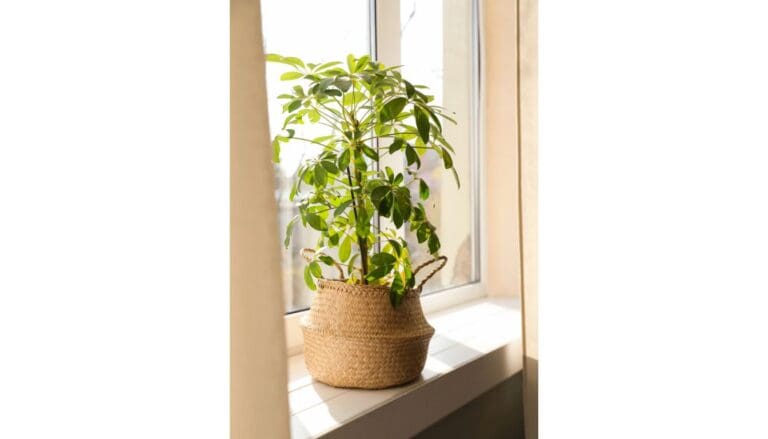How To Tell If Monstera Is Dying? (7 Signs You Need To Look For)
Monsteras are also known as swiss cheese plants as they have holes in their foliage. Although they are hardy plants, they still need proper care and cultural conditions to live healthy and bushy.
Your monstera plant will give you visual signs before they die. It is crucial to identify these signs to save your plant from wilting.
Monstera will give you several visual cues before they die. These include yellow leaves, droopy leaves, white spots, no new growth, and a wilting plant. It is crucial to identify the cause of these problems and fix them asap to save your monstera from dying.
Leaves are the first to get affected due to the bad health of plants from within. This makes things easy because through your monsteras leaves health, you can get a guide to the real issue.
Let us straight jump to the point and learn about the signs of a dying monstera plant and what you can do about it.

Please note: Simplify Plants is reader-supported. Some links in the post are affiliate links and I get a commission from purchases made through links in the post.
7 signs your monstera is dying
The best part about any monstera plant is that they show signs through their foliage when they are happy or unhappy. Your plant will give you visual cues when they are suffering from problems.
Monstera plants will give you signs through their leaves when they are unhealthy. There can be one or several reasons for your monstera plant dying. There are high chances that one problem leads to another and make the condition worse.
When you overwater your plants, and they are not getting enough light, there are high chances of root rot.
Even cultural conditions play an essential role in the plant’s health. The direct sun could burn leaves, leaving scars on them.
We have all possible signs put down to make it easy to understand what these signs are telling you.
Monstera leaves turning yellow and brown

Monsteras leaves turn yellow and brown to indicate the stress they are going through internally. It might also be caused by some cultural issues such as low light.
Yellow and brown leaves directly connect to soil moisture, and lack of light adds to the condition making it harder for the plants to thrive.
| Causes | Description |
|---|---|
| Over watering | Overwatering is usually the prime cause of yellow and brown leaves in the monstera plant. They don’t get the space to breathe and absorb nutrients due to drowning soil and roots. |
| Low light | Overwatered monsteras, when don’t get enough light, stay soggy for a long time, making it harder for soil to oxygenate and supply nutrients causing yellow and brown leaves. |
| Heavy soil | Sometimes you are not giving too much water to your monsters, but the soil cannot circulate the water and air properly due to heavy mixing. The water accumulates, and there is poor air and water flow in the soil, which suffocates them making a perfect environment for bacterial growth and root rot resulting in brown and yellow leaves. |
| Under watering | When you water your monsteras, the soil stays dry, and the plant gets dehydrated. Extremely dry plants show signs through yellow and brown leaves, makes the plant dull and leaves look lifeless and turn yellow. |
Also read: Why are my monstera leaves turning yellow?
Monstera leaves drooping

Leaves drooping in monstera plant show improper watering routines, or they are not getting enough light. It could be due to denser monsteras or the location you kept your monsteras.
If your monsteras leaves are drooping, they are showing initial signs of stress that can be fixed quickly.
| Causes | Description |
|---|---|
| Over Watering | Overwatering keeps the soil and roots moist all the time, causing them damage. They won’t be able to absorb and supply water. The leaves and stems will dehydrate, resulting in droopy leaves. |
| Under Watering | When you keep the soil dry most of the time, a point will come that the soil and roots will not be able to absorb and supply water. This will dehydrate the entire plant leading to droopy leaves. |
| Low Light | If you are watering fairly, then light could be the culprit. When monsteras don’t get enough light, the leaves become weak and not able to photosynthesize properly. The leaves start to droop as a sign of low light. |
| Low Temperature | Low-temperature levels break the cells of the monsteras leaves, causing leaves to droop. |
Also read: Why is my monstera drooping?
Spot on monstera leaf
When you see lustrous green leaves having spots on them, whether brown or black, they are signs of a sick plant.
There are several reasons to leaf spot, and when you see them, you should immediately know that your plant is delicate and needs attention.
These signs can mean one or more issues concerning the care routine you have been using for your monsteras.
| Causes | Description |
|---|---|
| Rot Rot | This occurs when the roots are stressed and overwatered to the point that the pathogens and bacteria grow rapidly, damaging the roots. The roots become so weak and vulnerable to stop functioning and provide nutrients to other parts of the plant. This leads to dark brown spots or black spots on leaves. |
| Direct Sun | When monsteras are exposed to the direct sun every day, the leaves get brown spots due to direct scorching sun burning the leaves. |
| Under watering | You can feel the soil dry when underwater for too long. They cause the leaves straight to dry and develop brown spots. |
| Misting | Too much misting can leave the leaves wet, which induces leaf rot or leads to fungal diseases, resulting in black or brown spots on the leaves in a monstera plant. |
Also read: Why does my monstera have brown spots?
Monstera stem turning white
Monsteras only get into such a situation when you provide a desirable condition for the fungus and bacteria to grow, which ends up damaging the leaves and stalks of the plant.
Look for fungal infection when you see monsteras stem turning white.
| Causes | Description |
|---|---|
| Fungal infection | Fungal infection provoked by fungal mycelia is already present in the soil. They grow in poor air circulation, and if you overwater, you give perfect environments for fungus to flourish. They multiply rapidly and hold on till treated. This leads to root rot and stem rot, thus leading to white stems. |
Monstera not growing new leaves

If your monstera plant is not growing, then it is a matter of urgency because healthy monsteras shoot new growth regularly during their growing season. If your monsteras are not growing for a long time, you need to check on some habits.
Your monsteras might be infested with pests. They go unseen as they are so tiny in size that you will discover them when they have multiplied in population or through signs your plant will exhibit.
| Causes | Description |
|---|---|
| Pests infestation | Pests invade and grow vigorously in no time. They spread and feed on sap from each part of the plant, sparing none. They make the leaves, stems weak, affect the functioning of plants affecting their growth. |
| Inadequate Light | Too little light can affect your monsteras growth. The plant needs light to photosynthesize, supply water and nutrients, and convert the nutrients into energy to grow new leaves. Thus low light will not be able to fulfill the needs of monsteras resulting in slow or no growth. |
| Crowded roots | When the roots grow extensive, coming out of the drainage holes and mass of roots developing on the topsoil, the roots need more space to spread, grow, and breathe. This will obviously affect the plant’s growth as roots are a crucial part of the plant, which helps them remain healthy and keep up with the growth. |
| Nutrient Deficiency | Every plant needs nutrients to maintain consistent growth. Due to a lack of nutrients, the soil will lack nutrients and energy required to have new growth. |
| Dormancy | Monsteras goes into dormancy during the dormant period, i.e., winter and autumn seasons naturally. During this time, the plants rest so the growth. This is natural and not a matter of stress. |
Monstera roots turning brown

Monsteras usually reflect their health through leaves, but sometimes you will never know what is going inside. When roots turn brown, it is due to root rot or over-watering, which will not show on the leaves during the early stage.
You can know by a foul odor from the soil, or when the condition is worse, the leaves will show some signs like brown leaves, yellow leaves, etc.
The plants have very low probabilities of getting into life in such states. You can be overwatering them or not providing them with enough light.
| Causes | Description |
|---|---|
| Root rot | Healthy roots are white and firm, which turn brown and mushy when unhealthy. This happens when the roots sit in a puddle of water continuously. Pathogens and bacteria get the perfect environment to grow and decay roots. |
| Poor drainage | If you are watering right, then the problem could be in the drainage system of your pot. Due to a poor drainage system, the excess water remains in the soil and roots, making the roots weak and brown in the long run. |
| Low Light | Monsteras can tolerate low light, but it gets more water than required or is watered before drying out the internal system will suffer. Due to low light, the water will not dry out gradually, resulting in root rot. |
Monstera leaves curling and turning yellow

Monstera foliage is radiant and green when healthy. If it is curling and turning yellow, your plant is showing primary signs of distress.
Due to improper soil moisture, monsteras leaves tend to curl and turn yellow. They curl mostly due to watering inadequately and turn yellow due to water or nutrients related issues.
Your monsteras, if stressed for too long, can even die. However, your plant will give you with a lot of visual cues before it dies. Let us see what these signs are and what this means.
| Causes | Description |
|---|---|
| Under watering | When you do not give enough water to your monstera plant, they get thirsty, dehydrate, and then the soil gets bone dry. The soil needs water to work efficiently, to supply water and nutrients to other parts of the plant. The leaves use up their moisture till they can generate energy to stay firm and green. Due to dehydration, the leaves curl inward and turn yellow. |
| Poor water quality | Monsteras are hardy plants with minimal needs. They adapt to changes and whatever you put into them. But sometimes, this doesn’t work; the tap water contains high soluble salts that can damage roots in the long run. This condition inhibits the roots and soil’s nutrient absorption, leading to curled and yellow leaves. |
| Over Fertilizing | Overfeeding your monstera plant seems rewarding initially, but internally, it causes more harm than you can think. The excess nutrients develop excess salt in the soil killing potential microorganisms in the soil required for the plant’s overall health. This appears as curled and yellow leaves in the initial stages. |
| Poor air circulation | Poor ventilation around your monsteras suffocates them. They stop light and increase moisture in and around them. This leads to fungal growth in the soil and roots, which affects the leaves that can be seen as curled and yellow leaves. |
Also read: Why are my monstera leaves curling?
Monstera common problems and its solutions
Fix by getting into the real cause and revive back your monsteras by following proper routine religiously.
Overwatering: Quickly fix your over-watered monsteras by letting them dry to the point there is no moisture left in the soil.
Test by poking a skewer in the soil from the top up to 2-3 inches and then pull it out. If the skewer has no soil stick on it, that means the soil is dry, and now you can water them.
Let the soil dry between watering every time you water your monsteras. It will save you from most of the issues we have discussed earlier and never let the plant die.
Underwatering: Giving a good soak to your under-watered and dry monstera plant is the first thing to be done in the morning. Water thoroughly. Excess water should be drained out through the drainage holes.
After the excess water has drained out, water the plant once again, it significantly reduces dryness in the soil.
Use bottom watering for a better soak. Take a tray line pebbles on the tray and pour water in the tray. Keep the monsteras pot on the tray.
The drainage holes should not touch the water in the tray. Through capillary action, the roots and soil will uptake water. Leave it for an hour to give your monsteras a good soak.
Also read: How often should you water your monstera plant?

Overfertilization: Fertilizers contain macro and micronutrients required for plant growth, but excessive of the same will harm them.
To fix this, wash the soil under running water to get rid of excess salt and let it dry. Do not fertilize for the subsequent two months.
Underfertilization: When your monsteras lack nutrients, it is essential to give them balanced fertilizer to supplement them with all the required nutrients. Any organic fertilizer in the ratio 20: 20: 20 is perfect for monsteras plants.
Fertilize once a month or two to provide your monsteras with the needed nutrients.
Poor air circulation: If your monsteras are choked due to poor ventilation around them, keep them in a more spacious area. Do not group them with other plants and do not keep them in the corner where there is less airflow.
Prune them to lighten up the plant. The soil will be able to receive more air and dry quickly. This will prevent sogginess in the soil.
Low water quality: If you can use filtered water, that would be the best way to avoid minerals in the water leading to salt buildups. If you have tap water, then let the water sit overnight and use it to water your monsteras the next day.
Low Light: Move your plant to a better and brighter location. West or east-facing window is good enough to provide them with sufficient light. Your plant should get 6-8 hours of indirect light at least every day.
Also read: How much light does a monstera need?
Too much light: Move your plant away from direct sun. If you have kept your monsteras near the window, carry them a few feet away from the window to the point they do not get direct scorching sun on them.
Must read:
Sources: Leaf morphogenesis in Monstera, Monstera overview, Common insect pests and diseases
Recommended Garden Supplies
| Product Image | Our Recommended Gardening Supplies | Check Offers! |
|---|---|---|
Top Top
Top
Top
Top
Top
Top
Top
Top | rePotme Houseplant and Tropical Classic Potting Soil Mix | Check Offer On Amazon |
 Top
Top
Top
Top
Top
Top
Top
Top | Espoma Organic Indoor Plant Food | Check Offer On Amazon |
 Top
Top
Top
Top
Top
Top
Top
Top | GooingTop LED Grow Light 6000K Full Spectrum Clip Plant Growing Lamp | Check Offer On Amazon |
 Top
Top
Top
Top
Top
Top
Top
Top | Soil Moisture Meter | Check Offer On Amazon |
 Top
Top
Top
Top
Top
Top
Top
Top | Govee Hygrometer Thermometer, Bluetooth Enabled! | Check Offer On Amazon |
 Top
Top | LEVOIT Humidifiers for Large Room(Best For Plants) | Check Offer On Amazon |
 Top
Top
Top
Top
Top
Top
Top
Top | Upgraded DIY Automatic Drip Irrigation Kit, 15 Potted Houseplants Support | Check Offer On Amazon |
 Top
Top
Top
Top
Top
Top
Top
Top | Stainless Steel Heavy Duty Gardening Tool Set | Check Offer On Amazon |
 Top
Top
Top
Top
Top
Top
Top
Top | Bonide Insecticidal Soap | Check Offer On Amazon |
 Top
Top
Top
Top
Top
Top
Top
Top | Bonide 32 oz Spray Neem Oil for Organic Gardening | Check Offer On Amazon |
 Top
Top
Top
Top
Top
Top
Top
Top | Garden Safe Fungicide | Check Offer On Amazon |






